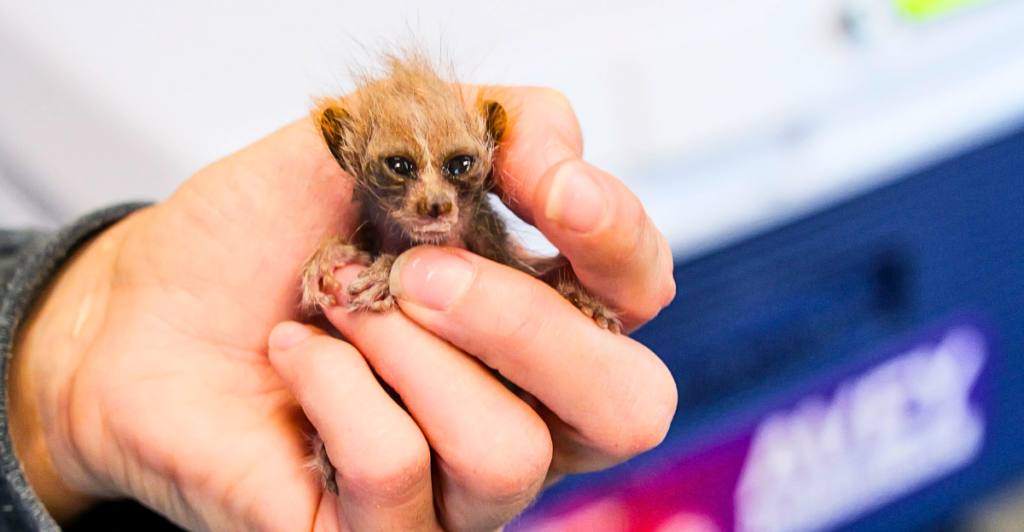
The Smithsonian’s National Zoo and Conservation Biology Institute (NZCBI) welcomed an adorable addition to its animal family—two pygmy slow loris babies. These tiny, endangered primates, born to 3-year-old Naga and 2-year-old Pabu, mark a historic first for the zoo. Their birth highlights the zoo’s vital conservation efforts and sheds light on the unique and intriguing traits of these nocturnal creatures.
A Surprising Discovery
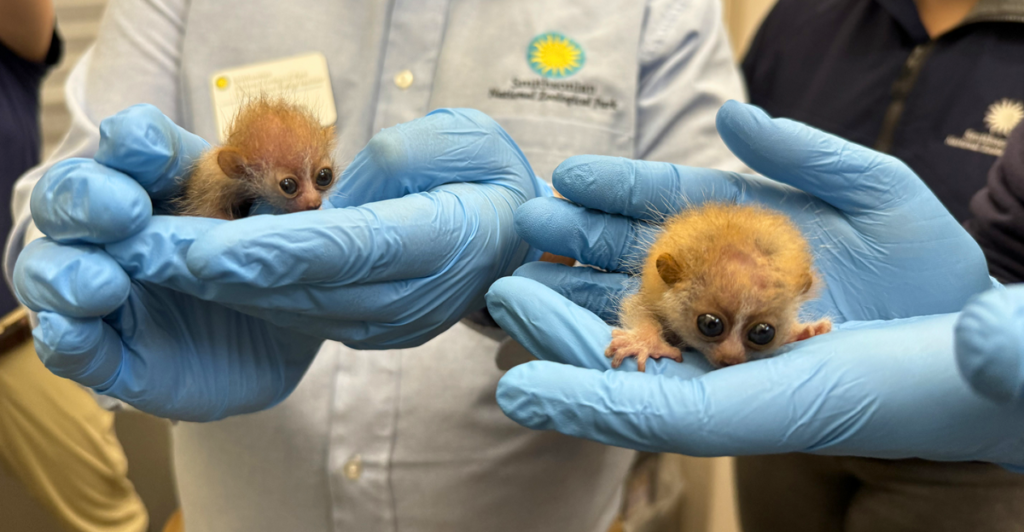
On the morning of March 21, zookeepers were greeted with an unexpected sight. Naga, usually resting at that hour, was perched on a high branch with two newborns clinging to her. “They were probably born right before we came in,” shared Kara Ingraham, an animal keeper at the zoo. This surprise arrival confirmed what staff had suspected but couldn’t verify due to Naga’s thick fur obscuring ultrasound results.
Healthy, But Under Watchful Eyes
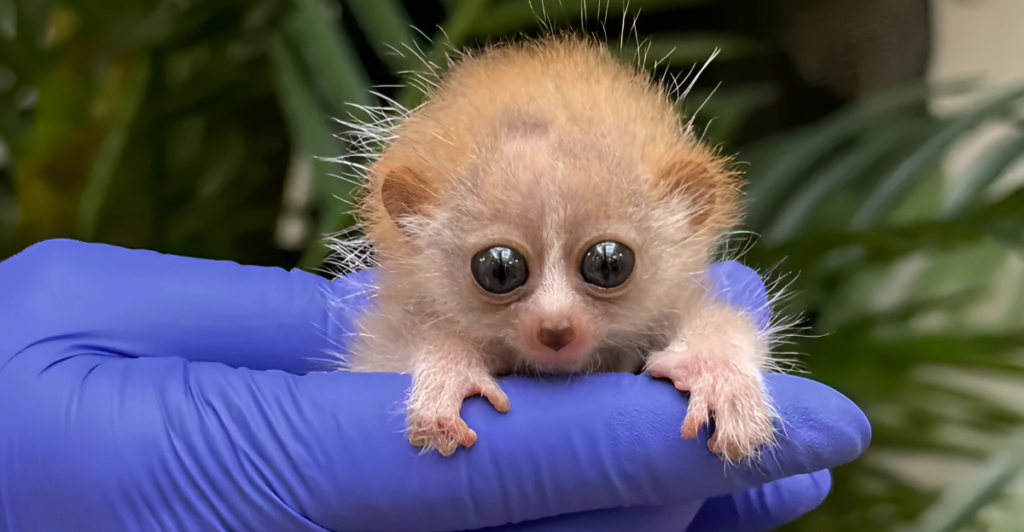
Though the babies are thriving, keepers are carefully monitoring them, particularly the smaller of the two. Daily weigh-ins have shown consistent growth, which Ingraham describes as a reassuring sign. The team remains vigilant, ensuring both infants continue to gain strength.
Conservation Status and Challenges
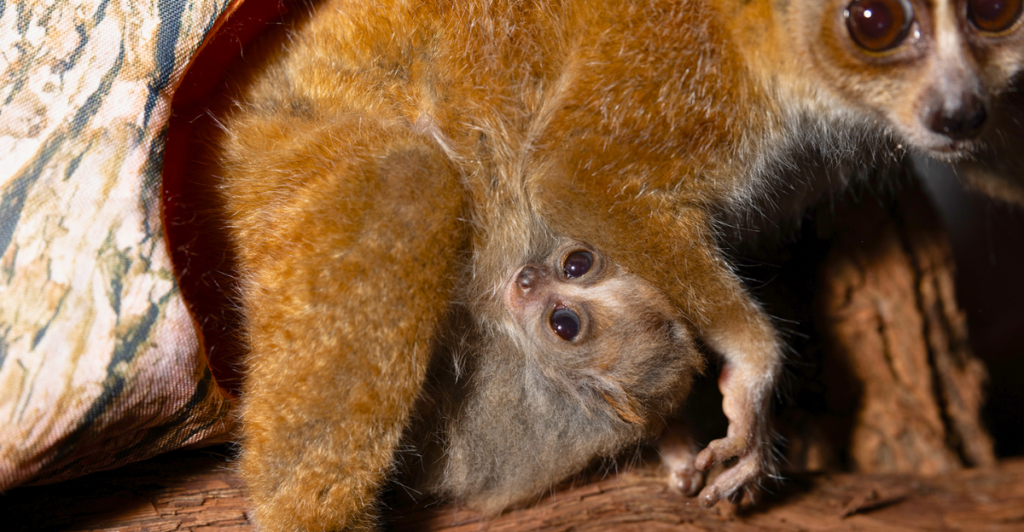
The International Union for Conservation of Nature lists pygmy slow lorises as ” endangered “. They are native to the forests of Cambodia, Laos, and Vietnam. Habitat loss and exploitation for traditional medicine and the pet trade have severely impacted their wild populations. Their round faces and teddy bear-like appearance make them targets for trafficking, but they are ill-suited for captivity outside professional care.
Venomous Yet Vulnerable
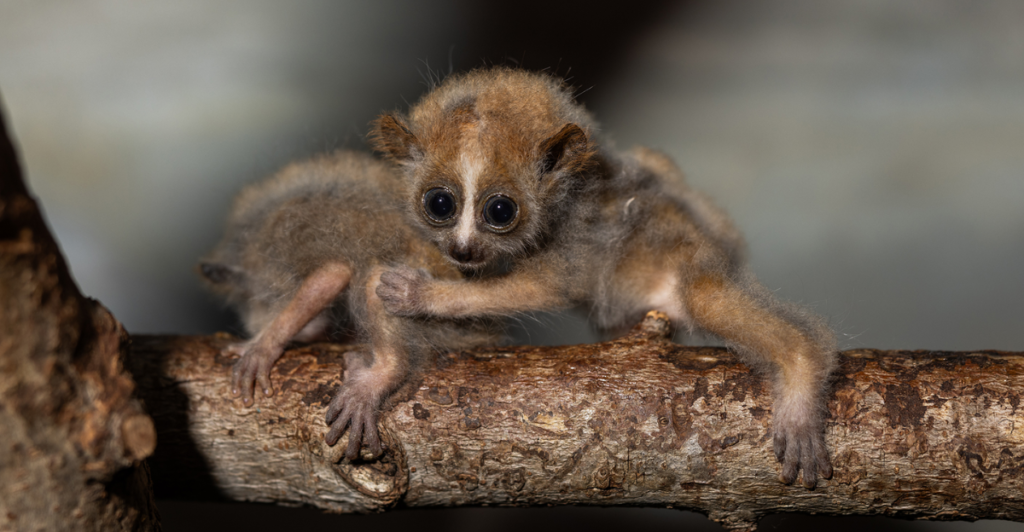
Pygmy slow lorises are the only primates known to produce venom, which can incapacitate predators, including humans. Despite their adorable looks, these sensitive animals are challenging to care for due to their dietary needs, social behaviors, and health vulnerabilities. Zookeepers hope to raise awareness about their unsuitability as pets.
A Conservation Match

The zoo’s efforts are part of a larger Species Survival Plan in collaboration with the Association of Zoos and Aquariums. Naga and Pabu were relocated from separate zoos and paired and introduced in August 2022. Their successful pairing underscores the importance of strategic breeding programs in maintaining genetic diversity.
Love at First Sight
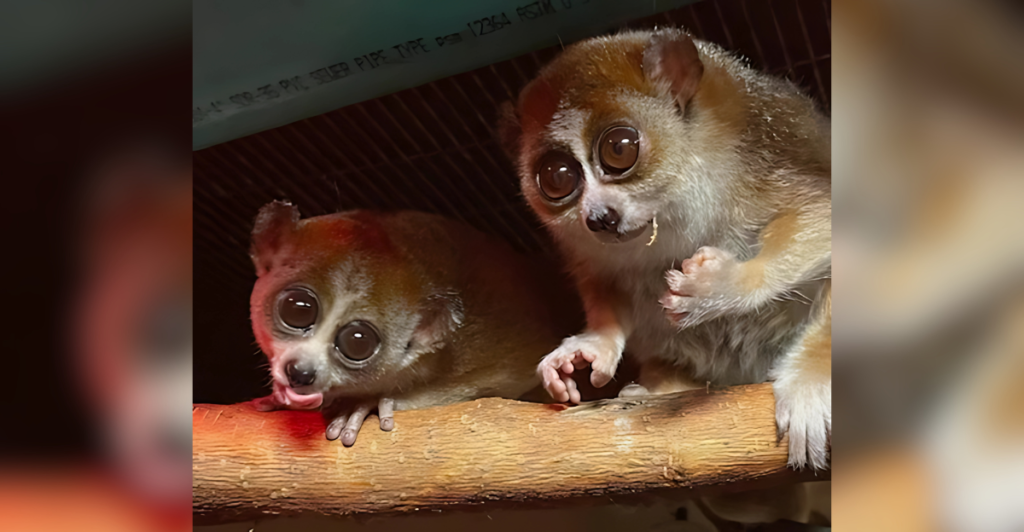
Although keepers never observed the pair mating, the birth timeline indicates that Naga and Pabu connected quickly. Their six-month gestation period suggests they hit it off shortly after meeting. This compatibility is credited to their contrasting temperaments—Naga is calm and cautious, while Pabu is curious and energetic.
Parenting Dynamics
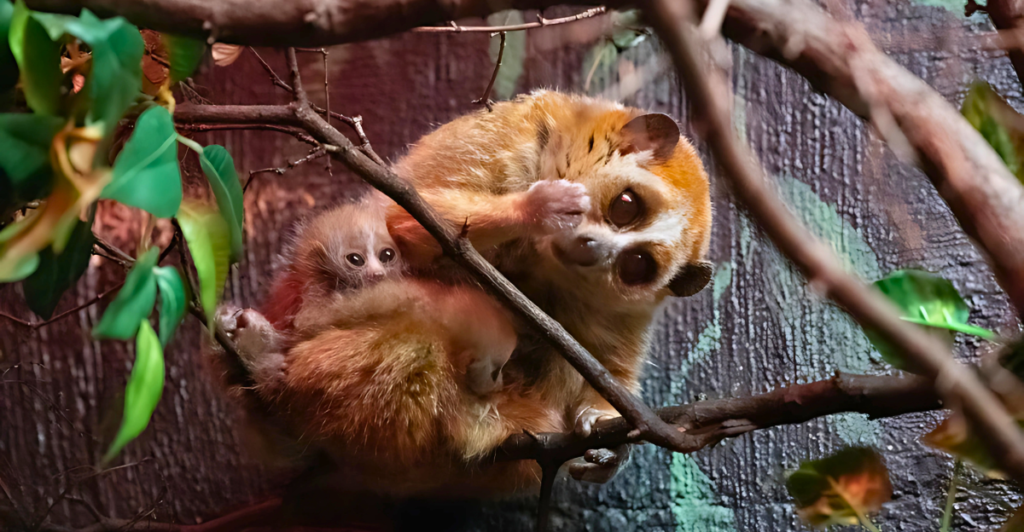
In pygmy slow loris families, mothers are typically the primary caregivers. At NZCBI, Naga has been nurturing her offspring through grooming, nursing, and carrying them. However, Pabu has proven to be a doting father, occasionally stepping in to care for the babies while Naga searches for food.
Growing Independence
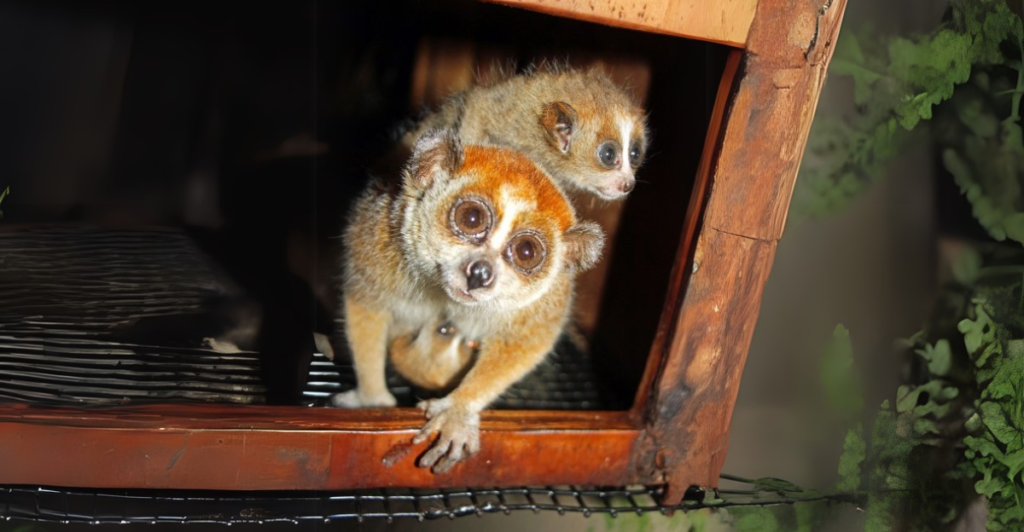
The babies often cling to Naga as she explores her habitat, but they exhibit early signs of independence. In the mornings, Naga “parks” them on a branch or in their nest while she ventures out. This common behavior demonstrates the species’ adaptability and instinctive parenting strategies.
Keeper-Baby Bond
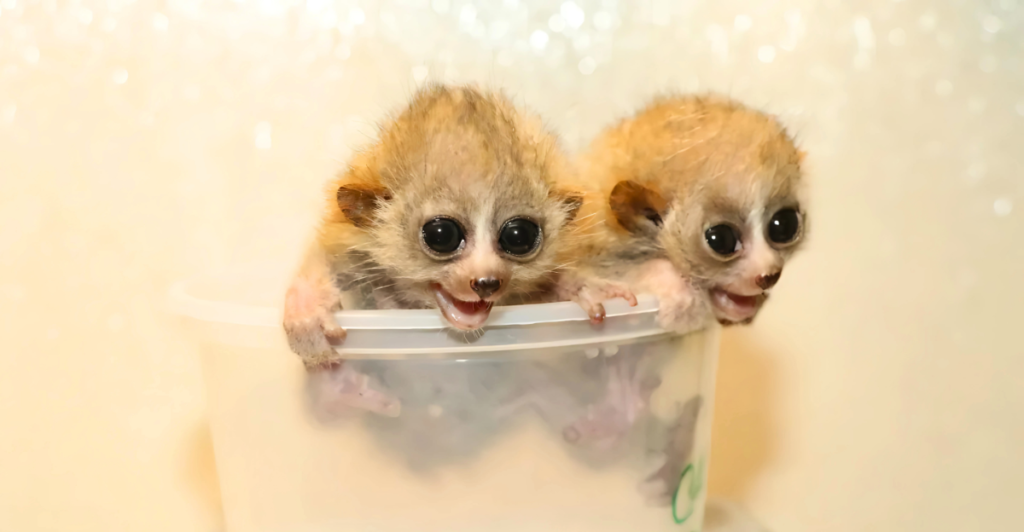
Zookeepers have developed a trusting relationship with both parents, allowing them to handle the babies for daily weigh-ins. Naga remains calm during these moments, often watching from a distance as keepers quickly weigh and return her young.
Milestones Ahead
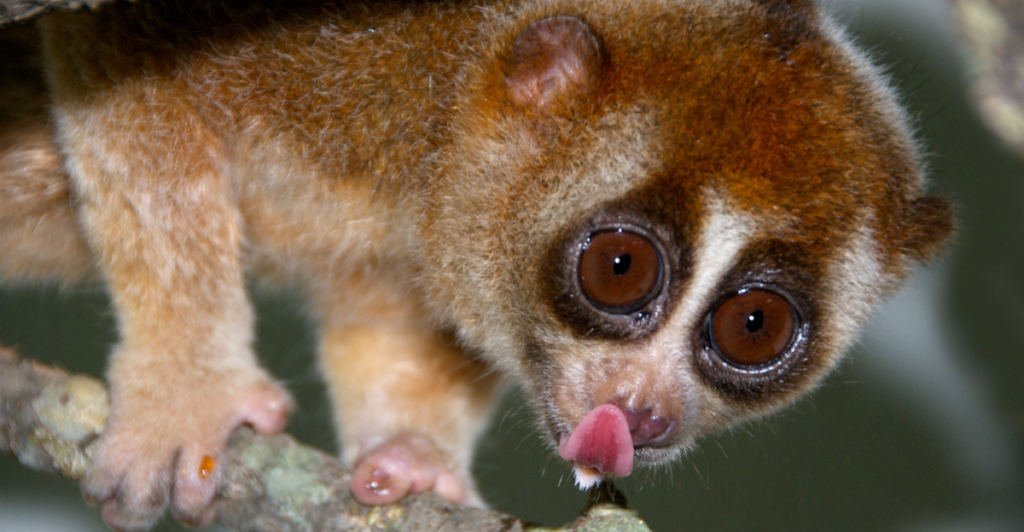
Currently reliant on their mother’s milk, the babies will soon begin experimenting with solid foods, such as insects and tree sap. Their growing curiosity is evident as they peek out of their nest and make soft clicking vocalizations, exploring their surroundings.
Ambassadors for Their Species
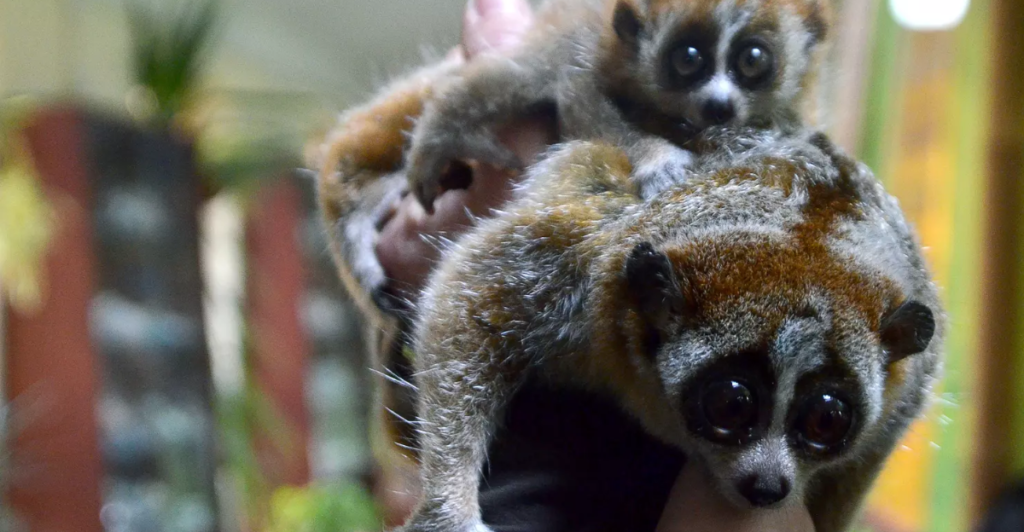
The birth of these pygmy slow lorises is more than a joyful event—it’s a critical step in conservation education. Visitors to the zoo’s Small Mammal House can learn about the challenges these primates face in the wild and how to support efforts to protect them.
A Bright Future
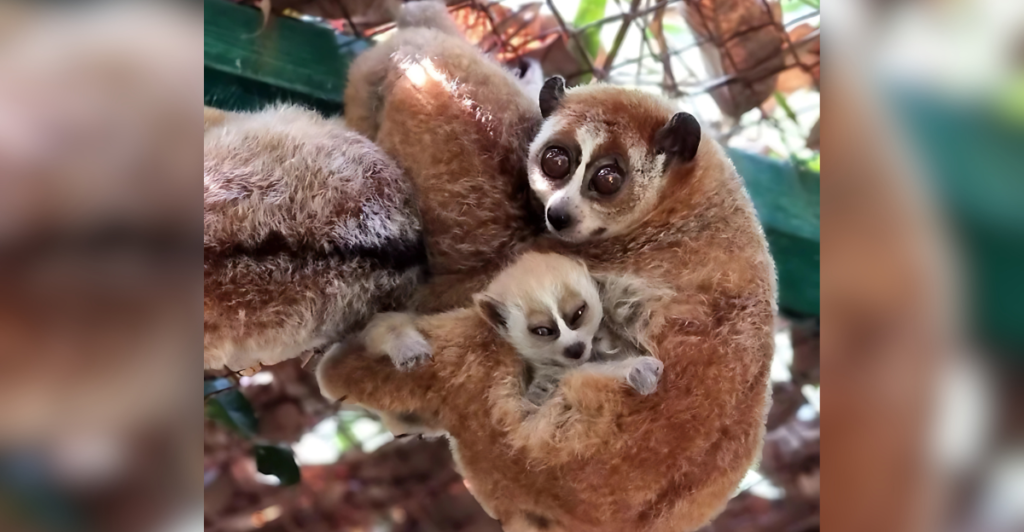
With their healthy development and the dedicated care of the zoo staff, these newborns represent hope for the future of their species. As ambassadors for conservation, they remind us of the importance of preserving biodiversity and respecting nature’s delicate balance.
Stay connected with us for more stories like this! Follow us to get the latest updates or hit the Follow button at the top of this article, and let us know what you think by leaving your feedback below. We’d love to hear from you!







